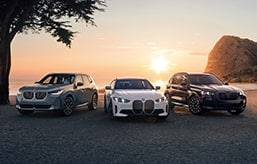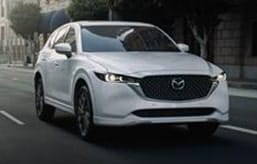- The Nissan Murano is finally redesigned
- A turbocharged 2.0-liter four-cylinder with a nine-speed auto replaces the old V6/CVT combo
- Interior borrows heavily from the Nissan Ariya EV
- Goes on sale in early 2025
2025 Nissan Murano First Look: An Ariya With a Gas Engine
Finally getting the VC-Turbo equation right?
Nissan's SUV lineup has been on something of an upswing recently — the core Rogue and Pathfinder have been redesigned in the last few years, and the new Kicks and Armada appear to be marked improvements over their predecessors. That leaves the midsize Murano as the odd man out; it's a decade old at this point, and rivals have long since improved upon the formula. Thankfully, Nissan isn't letting the one-time contender go down without a fight. The 2025 Nissan Murano is fully redesigned, with a new powertrain, modern tech and an eye-catching design that no longer looks like a Nissan Z that hit the buffet at Caesars a little too hard. Instead, the Murano draws clear design inspiration from the all-electric Nissan Ariya SUV, which isn't necessarily a bad thing.
Goodbye, CVT
Unlike many contemporary Nissans with continuously variable automatic transmissions (CVTs), the outgoing Murano didn't stumble all over itself or lack for acceleration. Props go to the tried-and-true V6 underhood — it made sufficient thrust throughout the rev range, so the CVT never exhibited the surging effect you usually get with CVTs paired with underpowered engines.
But the V6 is gone for 2025. Instead, the Murano is driven by a turbocharged 2.0-liter four-cylinder featuring Nissan's trick variable-compression technology. In theory, a variable compression ratio should deliver ultra-competitive fuel economy and acceleration figures (depending on how you're driving the car) but in reality, we've found that Nissan and Infiniti models that use this VC-Turbo engine aren't any quicker or more efficient than their rivals. Essentially, a technological milestone that isn't any better than the simpler solutions rivals offer.
But the Murano has an ace up its sleeve: Instead of a CVT, it uses a nine-speed conventional automatic. It's possible that the unremarkable performance we've noted in other vehicles with the VC-Turbo/CVT combo is solved by the transmission swap. We're less impressed by the Murano's output stats, however. The new turbo-four produces 241 horsepower and 260 lb-ft of torque; the old V6 made 260 hp and 240 lb-ft. We don't expect ultimate performance to be significantly different, then. Nissan is also targeting an EPA rating of 23 mpg combined (23 city/24 highway) for both front- and all-wheel-drive applications. Compared to the old Murano's 23 mpg combined (20 city/28 highway), we can see the combined figures stay the same, while the city rating jumps and the highway estimate falls mightily. So if you're doing a lot of urban driving, the new Murano comes out on top, but highway drivers might want to think twice.
Much-improved interior
Considering the previous model's interior design went unchanged over its lengthy lifespan, jumping into a new Murano from the the old one will come as a shock. The new Murano's connection to the Ariya is even more obvious inside, where the Murano looks almost identical to its electric sibling. The two-spoke steering wheel, haptic sensors for the climate controls, and dual-screen setup for the instrument panel and touchscreen are shared between the two vehicles. The major differentiator is the center console. The Ariya has a wide open space between the cupholder/armrest console and the dashboard. The Murano, by contrast, has a console that extends all the way to the center stack, and the transmission selector buttons are located just in front of the cupholders.
One thing that hasn't totally transformed? Nissan's Zero Gravity seats. The plush yet supportive thrones were the previous Murano's strongest selling point. We're happy to report that for 2025, Nissan is including the ZG seats in the rear outboard positions, so even your backseat passengers can relax in supreme comfort. Heated front seats with synthetic leather upholstery come standard, with Platinum models adding ventilated and massaging front seats, heated rear outboard seats and genuine leather upholstery.
Modern tech
Every Murano kicks off the tech offerings with twin 12.3-inch displays and wireless Apple CarPlay and Android Auto. A standard six-speaker audio system is fine and all, but drivers who want more speakers will need to step up to the SL or Platinum, which add a 10-speaker Bose setup. Those trims also add Google built-in capabilities for the infotainment system, plus a Wi-Fi hotspot.
Standard safety equipment includes the ProPilot Assist suite, which consists of driving aids like adaptive cruise control, a blind-spot monitor with emergency intervention, lane departure warning, and rear cross-traffic alert with automatic braking. Opting for the SL or Platinum grade adds a 360-degree camera and ProPilot Assist 1.1. This variation of the basic system adds navigation integration, so the adaptive cruise system can slow the car down for upcoming turns.
Edmunds says
We're happy to see the Murano continue on. A spiffy new powertrain, upgraded tech and an improved interior could be just what the Murano needs to be truly competitive.







 by
by  edited by
edited by